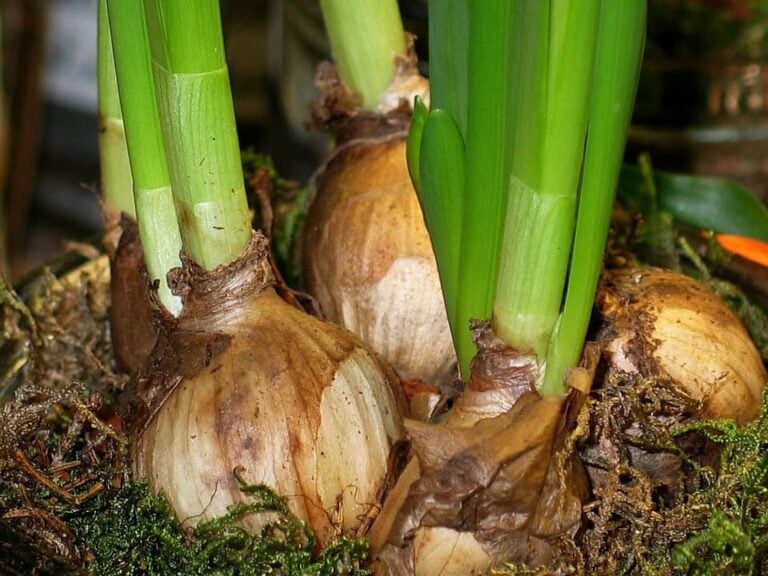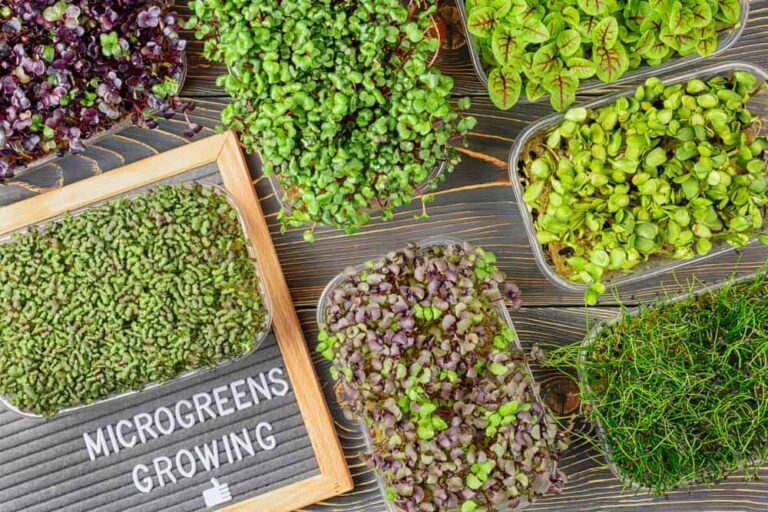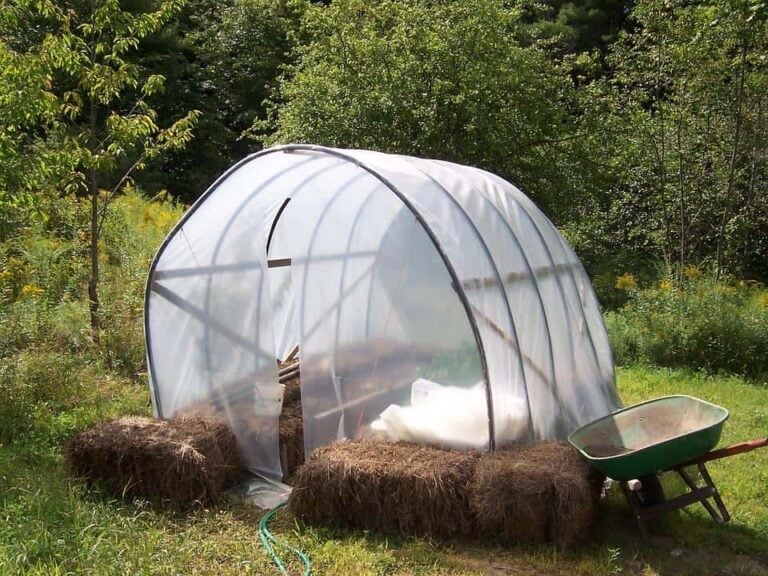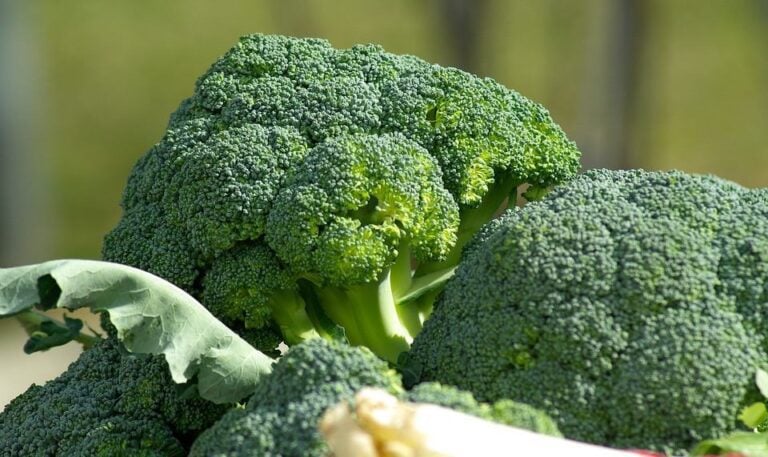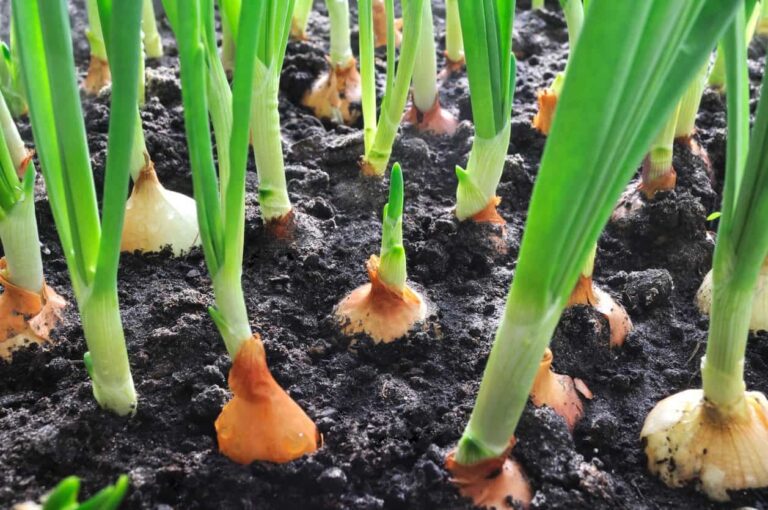Our Helpful Guide to Harvesting Potatoes
Your potatoes should be ready to harvest when vines die off and the soil is warm. Pick a cool or warm, dry day to harvest your potatoes and make sure the soil is dry. Check the maturity of your crops by digging up a plant and checking the potato’s skin. If they’re ready, gently dig up your potatoes using a pitchfork. Allow potatoes to dry for a few hours outside in dry soil before using or storing them in a dark, dry storage area.
When to Harvest Potatoes
This video by The Quarter Acre Homestead is a short and informative video to watch if you want to know how to check to make sure your potatoes are ready to be harvested:
But, there are some basic guidelines you should follow too, rather than winging it. Like most crops, potatoes have a general timeline of how long they should grow to reach full maturity from the time you planted them. Of course, these guidelines can vary based on the region you live and what time of year you planted them.
A good, tell-tale sign that your potatoes are ready to be harvested is that the above-ground vine will die off. Your potatoes feed off the starch in the vine, so when potato vines die, this means your potatoes are feeding well until there is no more left to feed from.
You’ll also want to make sure you harvest your potato crops before signs of heavy frost begin, since most potatoes won’t be able to withstand it and it will make your harvesting process much more difficult. A good rule of thumb is to check your soil temperature. It’s best to harvest when your soil is at least 45 degrees Fahrenheit.
Preparing to Harvest Potatoes
There are a few important tips to help you prepare for harvesting potatoes. First, gather up the tools you’ll need to harvest. In the case of potatoes, this is easy: Some gardening gloves, should you prefer them, and a shovel or pitchfork. Potato gardeners typically recommend using a pitchfork because it helps to break up the soil and can pull up potato crops while leaving the soil behind.
You’ll also need to be mindful of weather conditions when harvesting potatoes. The best time to harvest your potato crops is when the soil and weather are dry. Pick a day to harvest when there has been very little to no rain for the past few days and no rain in the forecast for the current day. Since you’ll possibly be digging up several potatoes at a time, you’ll be able to leave them in the dry soil for a few hours after so they can dry.
Better Vegetable Gardening also recommends preparing to harvest early in the morning before it gets hot from the sun because potatoes don’t survive well in excessive heat and sun.
Check for Crop Maturity
Not all potato varieties grow at the same rate. Numerous factors, such as soil temperature, weather, and water supply, can affect the growth rate of your crops. So, it’s good practice to learn a few ways to check for crop maturity before you harvest them to ensure the healthiest potatoes.
The most obvious sign of maturity that requires no digging is the death of your potato vines. When these die off, your potatoes have fed off the remaining starch, making them about as big as they’ll get. If your potato plants have flowered, but the vines have not yet died off, they are reaching maturity, but not quite ready yet.
If you want to check a crop more in-depth, you can gently dig up one of your plants to see its potatoes. This won’t harm them if you’re careful where you’re digging.
Check the skin of a potato by rubbing your thumb against it. Thin skins that rub off easily are not mature enough yet for harvesting. You can gently place the plant back into its trench and cover it with soil for an extra one to two weeks. But, if the potato skin is thick and remains attached to the potato, it’s ready to harvest.
Digging for Potatoes
When digging up your potato plants, gentleness is key. If you dig too close to the plant, you could risk destroying your potatoes by stabbing or slicing them.
Here’s a quick video from Joe and Zach Survival showing how to do it:
The Country Basket recommends using a pitchfork to begin digging several inches away from where the vines grow from the ground. This leaves plenty of space between the potatoes underground and your pitchfork.
Use the pitchfork to gently loosen the soil around the plant. Carefully inch closer to the plant, digging deeply and gently moving soil. Once you’ve reached the potatoes, use your pitchfork to carefully pull up on the crop to remove it from the ground. You should end up pulling out the full rooting system and its potatoes.
You can use your hands to fully remove the potatoes and roots from the soil. Then, pull each potato from the roots with your hands. They usually remove easily this way.
Care After Harvesting
After you dig your potatoes, you don’t need to spend a tremendous amount of time caring for them. But they do need a few important things for the best health after harvesting.
Potatoes do need a few hours to dry once they’re out of the ground. Leave them right on top of the dry soil to dry thoroughly. This helps them toughen and also loosens some of the moistened soil that sticks to the skins. Although it’s not necessary to brush the soil from the skins, you can use a gentle brush to knock off stubborn clumps. Do not wash your potatoes, though. Do this only when you’re ready to use them.
Your harvested potatoes should be stored in a dark area away from any light source. Unless you are using them right away, allow them to dry in storage for at least one to two weeks.
P.S. Here are some more great tips on harvesting potatoes from our friends at Seeds of Eden.
Photo by Ciaran Mooney licensed under CC BY 2.0.

